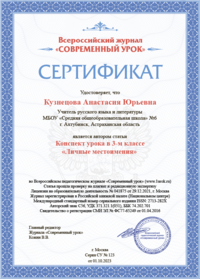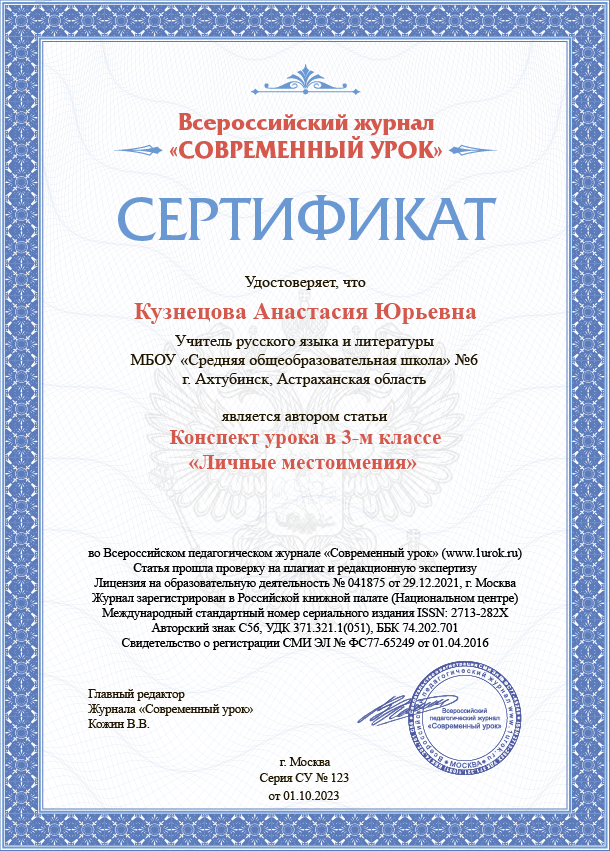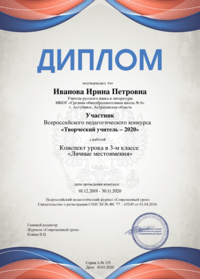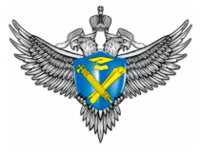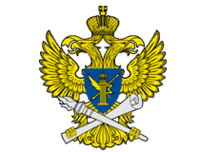Leisure Activities. Hobbies. Местоимения (личные и возвратные)
Автор: Попова Марина Викторовна
Организация: ОСП «Индустриальный техникум» ГОУ ВПО ЛНР «ДонГТУ»
Населенный пункт: г. Алчевск, Луганская Народная Республика
Аннотация
На современном этапе развития общества знание иностранного языка уже не прихоть или хобби, а скорее необходимость. Рынок труда быстро меняется, что, в свою очередь, диктует потребность в высококвалифицированных специалистах, способных мобильно и гибко реагировать на мгновенные изменения, решать нестандартные задания и проблемы быстро и творчески. Таким образом, совершенно очевидно, что обучение иностранному языку должно быть направлено на развитие умений и навыков самостоятельной деятельности, необходимых для постоянного образования и самообразования студента в системе СПО, а также на развитие конструктивного мышления, развитие умений и навыков эффективного взаимодействия и коммуникации, формирования позитивного отношения к себе и окружающему миру.
Данная методическая разработка практического занятия по дисциплине «Иностранный язык» для студентов I курса всех специальностей ОСП «Индустриальный техникум» ГОУ ВПО ЛНР «Донбасский государственный технический университет» на тему: «Leisure Activities. Hobbies. Местоимения (личные и возвратные)» призвана объединить личностно-ориентированные технологии, а именно проектную, с аудиторно-урочной деятельностью с целью найти разумный баланс между академическими и прагматическими знаниями, умениями и навыками.
Данная разработка преподавателя высшей категории Поповой М.В. нацелена на решение целого ряда разноуровневых дидактических, воспитательных и развивающих задач: развиваются познавательные навыки студентов, формируется умение самостоятельно конструировать свои знания, умение ориентироваться в информационном пространстве, активно развивается критическое мышление, сфера коммуникации и т.п.
Для проведения открытого занятия преподавателем был предварительно отобран оригинальный англоязычный материал: “New Headway Video. Pre-Intermediate.” (Oxford English Video) и “New Headway Video. Веginner.” (Oxford English Video), а также “Aladdin” (Walt Disney Classics).
Тема практического занятия: Досуг. Моё хобби.
Подтема: Местоимения.(личные и возвратные).
Цель занятия:
- совершенствовать лексические и коммуникативные навыки студентов посредством системы тренировочных, игровых, творческих упражнений, заданий-проектов (презентаций);
- познакомить студентов с реалиями жизни в Великобритании и США в соответствии с темой занятия;
- развивать навыки аудирования, чтения, говорения, письма; умение формулировать свою мысль и высказывать её на иностранном языке; языковую догадку и речевую реакцию студентов; их слуховую и зрительную память;
- воспитывать толерантное отношение к точке зрения собеседника, культуру общения, чувство уважения к интересам другого человека.
Методи и приёмы: работа в парах, индивидуальная работа,работа в группе, проектный метод, коммуникативний метод.
Тип занятия: комбинированное занятие с элементами презентации проектов.
Оборудование:
- телевизор;
- DVD- проигрыватель;
- компьютер;
- демонстрационный экран;
- доска с плакатом-девизом занятия;
- эпизод из фильму видеокурса английского языка “New Headway Video. Pre-Intermediate.” (Oxford English Video) под. названием “Not Working Out” ;
- эпизод из фильму видеокурса английского языка “New Headway Video. Веginner.” (Oxford English Video) под. названием “Home Movie”;
- эпизод из мультипликационного фильма на английском языке“Aladdin” (Walt Disney Classics);
- раздаточный материал “Episode 2”;
- раздаточныйматериал “The Tretyakov Gallery”;
- раздаточныйматериал “Home Movie”;
- раздаточныйматериал “Coin Collecting”;
- карточки с изображением разных видов хобби;
- корзинка;
- альбом с марками, куклы-марионетки, другие предметы, которые демонстрируют хобби студентов;
- таблицы для оцениванияя студентами своих достижений и достижений своих одногруппников;
- презентация к занятию со слайдами, видео- и аудио материалом.
Ход занятия
I Подготовка к восприятию иноязычной речи.
1. Сообщение темы и цели занятия.
T.: Good morning, students! I am glad to see you at our lesson. This lesson is unusual. Today we have got some guests, and I want you to welcome them.
Sts: Good morning, dear guests!
T.: Sit down, please! Who is on duty today? … Who is absent?...Thank you.
T.: The theme of our today’s lesson is “Hobbies. Reflexive and Personal Pronouns”. I would like you to generalize your knowledge of this subject; to revise your vocabulary and communicative formulas to give you possibility to speak in the situations; to use Reflexive-Emphatic Pronouns and Personal Pronouns used before verbs as subjects and after verbs as objects.
I want you to look at the mottoes of our lesson. They are:
- The more we do, the more we can do. (It is a statement of Hazlitt, a famous English literary critic), and
- Work is the meat of life. Pleasure the dessert. (It’s a statement of Forbs, an American writer).
I think both statements are connected with the definition of hobby.
Today you’ll estimate your groupmates and write down their marks in the table. Everybody has got such a table on his desk.
T.: People like doing different things. They enjoy it. They do it with great pleasure. Some people devote to it all their free time. Sometimes a hobby can become their profession.
We choose a hobby according to our character and taste. When we have a hobby our life becomes more interesting. Now tell me what is a hobby?
Sts: A hobby is a favourite occupation of a person in his free time.
2. Введение в англоязычную атмосферу.
T.: Let’s remember what are British people and Americans interested in. Let’s name their main leisure trends.
St 1: The English like growing flowers. It’s useful occupation because it doesn’t harm anyone. In winter the most romantic thing for some people is to pick up a seed catalogue and look at the brightly colored pictures of summer flowers. Even people with a tiny patch of ground in towns like growing plants and people who have never seriously tried to speak any foreign language carefully learn the Latin names of the flowers they plant, so that they can tell their friends.
St 2: If you want to please an English person, be very polite about his garden. He will probably tell you about his garden. So you listen and say: “How interesting! How clever of you!”
St 3: The British are keen gardeners. Every small, suburban house has a lovingly kept lawn and garden. In city parks people sit on the grass to eat their lunch on nice summer days.
The English gardens are internationally famous. Some of them are very beautiful, especially the ones that are open to the public.
St 4: The most common leisure activities among people in Britain are homebased, or social, such as visiting relatives and friends.
Watching television is by the far the most popular leisure pastime. Nearly every household has a television set, and average viewing time is over 26 hours a week. The majority of households also have a video recorder and a DVD-player.
Other regular pastimes include listening to the radio and recorded music. About 70 per cent of the population listen to the local and national radio every day.
St 5: Many people in their spare time enjoy reading (over 50 per cent belong to a library), gardening, do-it-yourself home improvements, undertaking voluntary work, going out for a meal and drink or to the cinema and theatre.
Besides, walking, swimming, and snooker are enjoyed by millions of people, while football is Britain’s most popular spectator sport.
St 6: Some of the most popular leisure activities in the United States are physical culture, dancing, walking, hiking, mountain climbing, and hunting. But many leisure pursuits are not connected with physical culture. Among the arts and crafts, for example, making pottery is perhaps the most popular. Training pet animals occupies an essential part in the life of Americans.
St 7: Large picnics are often held on major holidays. These gatherings are usually distinguished by eating hamburgers and hotdogs. Throwing horseshoes is traditional at picnics. Special games are usually organized for children.
As Americans spend a greater proportion of their lifetimes in retirement, leisure is still a very important part of their lives.
St 8: More and more people visit parks at leisure. There is a great network of city parks, country parks, and national parks, which contain children’s playgrounds, tennis courts, and golf courts….
St 9: Television has become an integral part of American culture. Not only because it is a popular way of spending leisure time. It also transmits and reflects aspects of culture. An extremely wide variety of programming is available on television today. It can be an important educational tool, as well as a source of entertainment. There is enough choice to please everyone – programmes include religious shows, sport events, adventures, and children shows. Modern shows, musicals and movies also attract audiences.
Household chores are not common way of spending free time and vocation for many Americans. They prefer playing sports, travelling, visiting friends or relatives, spending time on the beach of the lake, and organizing an outing that includes a meal eaten out-of-doors.
St 10: Americans, who love hobbies, find a great many different ways to spend their leisure time and extra money. Some are stamp collectors, coin collectors, photographers, miniature homebuilders, boaters, gun collectors, surfers, and enthusiasts of dozens of other hobbies. The most popular hobbies have organizations and publications devoted to the subject. No matter what one is interested in, it is easy to find the information and companionship that make a hobby fun.
II Основная часть занятия.
1. Введение ЛЕ темы “Leisure Activities. Hobbies”.
T.: Now, friends, look at our screen and recite the groups of leisure and cultural activities to sum up what we have just said. Let’s translate them.
Pastimes and hobbies can be:
St 1: - card games ( bridge, poker,…)
- board games ( chess, draughts, lotto,…)
- trivia games, puzzles ( jigsaw, crosswords…)
- collecting ( coins, stamps, souvenirs…)
- crafts ( sewing, woodwork…)
- dancing ( ballroom, disco…)
Sports:
- fishing, hunting, camping…
- cycling, hiking, swimming…
- sailing, surfing, skating…
- badminton, tennis…
- volleyball, basketball,…
- hockey, golf…
- martial arts ( judo )…
- weight-lifting, track…
Music:
- listening ( rock, country’s, western, folk, jazz, classical, opera )…
- playing instruments ( piano, guitar, drums…)
Reading:
- paperbacks,
- hardcover,
- novels,
- best-sellers
Places to visit:
- museums, galleries, theatres, movies…
- zoo, circus, sport stadium…
- amusement parks, exhibition…
Different genres of movies and books:
- mystery, thriller, detective story…
- science fiction, fantasy, comedy, humour…
- non-fiction, documentary, biography…
2. Активизация нових лексических единиц (ЛЕ) посредством системы игровых упражнений.
T.: Now let’s play a game. Today we have a magic basket. Your task is to take your picture out of it and give a testimonial for the kind of hobby which is painted on this picture. You may use a table on the screen.
St 1: This hobby is … .It is an indoor activity. It is quiet. It is homebased and practical.
St 2:…
St 3:…
…………………………………………………………………………………………………….
T.: Thank you, students! But I want to know who can name the largest number of hobbies. Let’s work in pairs.
St 1 – St 2, St 2 – St 1, St1 – St 2…
T.: Well done! The best expert is….
3. Аудирование англоязычного текста, просмотр эпизодов фильмов с дальнейшим выполнением упражнений в соответствии с предложенным видеоматериалом.
T.: Now I want you to watch our TV. You’ll see three episodes from different films and a cartoon. Then think a little and tell me what hobby is this film about. And can we define it as a hobby?
Episode 1. “Not Working Out”
T.: You have just seen an episode which was called “Not Working Out”. Let’s discuss it. How do you think if David’s work-out is his hobby? Prove your point of view.
St 1:…
St 2:…
St 3:…
T.: I agree with you. It is not a hobby for him. Let’s see the next episode.
Episode 2. “Aladdin”
T.: Tell me, please, is granting any man’s wish a hobby for Genie? How do you think?
St 1:….
T.: Is making tricks a hobby for him?
St 2:….
St 3:….
T.: You are right. This isn’t a hobby for Genie. Let’s see the last episode and match hobbies of David, Helen and Matthew on the information card you see on your desks.
Episode 3. “Home Movie”
T.: Dear friends, let’s get the information about our heroes!
St 1:….
St 2:….
St 3:….
4. Тренировка диалогической речи студентов.
T.: Well done! Now answer my questions. St 1, tell me, please, have you chosen a hobby according to your character?
St 1: Not, yet.
T.: Have you collected anything?
St 1: I haven’t got money enough yet.
T.: But many world-famous collections started in a small way with one or two items. Can you contradict?
St 1: No, I can’t. But only people with a good deal of money collect paintings, rare books and other art objects. Often such primitive collections are given to museums, libraries and public galleries.
T.: Have you ever heard of such generous collectors?
St 1: Yes, I have. So one of the Morozov brothers, a Russian businessman, gave his collection of the French impressionists paintings to the Pushkin Museum of Fine Arts as a gift at the beginning of the 20th century. But he was not the only maker of such an expensive and dear presents.
T.: Who else was?
St 1: The Tretyakov brothers were. ….
5. Практика студентов в чтении и переводе англоязычного текста.
T.: Let’s read and translate additional information about the Tretyakov Gallery.
The Tretyakov Gallery
The Tretyakov gallery in Moscow is one of the world’s richest museums, a treasure-house of the finest works of Russian art. The gallery contains over fifty thousand paintings, sculptures, drawings representing the history of Russia artistic culture from the XI century to the present day. This collection was founded by Pavel Tretyakov.
Pavel Tretyakov was convinced, that art was a great forse in the enlightment and moral education of people. Tretyakov began to collect art with an idea that the museum would be open to all people.
The painters V.Perov, I.Repin and I.Kramskoi advised Tretyakov in selecting the very best works. Tretyakov used to visit the artistic studious and art exhibitions and bought the paintings there. Moreover, Tretyakov arranged for leading Russian writers, scientists, composers and artists to sit for the best portrait painters. As a result, a collection of portraits was formed in the gallery.
In 1892 Pavel Tretyakov donated his picture gallery to the city of Moscow together with the building in which it was housed and the collection of Western European paintings of his brother Sergei Tretyakov. From that time the museum was called “ The Pavel and Sergei Tretyakov Moscow City Art Gallery”. Every year the Gallery acquires hundreds of new paintings, sculptures and drawings.
The famous paintings of many outstanding Russian artists are collected in the Tretyakov Gallery. There are paintings of V.Surikov, I.Levitan, I.Aivazovski, I.Repin, I.Kramskoi, M.Vrubel and others.
6. Повторение студентами грамматического материала..
T.: OK. Tell me, please, about your hobby or the hobby of one of your family’s member. But at first let’s review types of pronouns you should use in your presentation.
Today we’ll speak about 3 types of pronouns. Let’s call them.
St 1:....
7. Тренировка монологической речи студентов. Презентация студентами проектов, демонстрирующих своё хобби или хобби членов их семей.
T.: OK. Please, pay attention on their usage in your speech. Let’s start!
Presentation 1.
Arseny Balabin
Good morning! My name is Arseny Balabin. There are different kinds of sport , but I’d like to speak about ping-pong also known under the primitive name – table-tennis.
I believe it’s very exciting to go in for this type of tennis. One can play it indoors irrespective of the season.
I’ve been fond of ping-pong since my early years, and I wish to play it during all my lifetime as ping-pong develops my reaction, gives some relaxation and sometimes (not very often) while playing it, I can solve my problems. For some other people it can give a sense of life, like the sunlight shining through the window endows us with harmony and makes our thoughts luminous.
We need special equipment for this sport: rackets, a ping-pong ball, a green table with a low ping-pong net. Though ping-pong is an expensive game and not everyone can afford it, but to play it is like to jump up and down from one cloud to another in the sky!
I can’t name a famous tennis player to worship him\her, but to play ping-pong doesn’t mean to learn its history. It means to become free.
Presentation 2.
Ivan Dobryanski
Hello! My name is Ivan. My hobby is making different experiments which are connected with high tension. I devise my own schemes or try to repeat the experiments of different famous scientists. Sometimes I base myself on the experiments of a famous scientist Nikola Tesla, but I fail. Now I am constructing “ Tesla’s transformer ” .
Tesla is a highly gifted scientist. He created an artificial lightning which is three times as powerful as a natural lightning.
Now you can see one of my experiments on the screen.
Presentation 3.
Nikita Golovenko
Hi, guys! I am Nikita. Making music is my hobby.
Everybody says he or she likes music: some people enjoy classical music, others are fond of popular music. I like rap. I think music is a language. I use it to express my moods and feeling. Some music is happy, and another is sad in my songs. Some is serious, and another can make people laugh.
I and my friends make our own music and our own songs. To be more precise I am a member of the rap-group “DYNAMO S.S.” There are four of us now.
Why did we give such a strange name to our group? The matter of fact is that each of us went in for sports in the sport club “DYNAMO” two years ago. We went to play football, basketball , or boxing. Then we began trying to set the words of our own songs to our music. So the name of our sport club became the name of our rap-group.
Actually, I like all types of music. But rap is my number one. Call it “rap”, or call it “hip-hop”, it’s the same thing. The words of rap are important. It’s not just music – there is a message to our listeners. You can dance and think at the same time!
Now I want you to listen to our song, which is called “ The Past ”
……………………………………………………………………………………………………… Thank you. That’s all.
Presentation 4.
Igor Verovski
Good morning! My name is Igor. I want to tell you about my cousin’s collection. She is fond of collecting hand puppets. She has got a very good collection and she is proud of it. She keeps her puppets in the box at home and she arranges performances at weekends in the evenings.
She specializes in hand puppets on one subject only: the heroes of fairy-tales. You can see some of them: Little Red Riding Hood, Wolf, King, Queen, Prince, Princess.
One of her favourite fairy-tales is “Little Red Riding Hood” . I like to recite a poem in English for her:
Right through the woods – not very far –
Lives Red Riding Hood’s grandma.
To visit her, she often takes
Butter, eggs and home-made cakes.
Her mummy tells her every day:
“Don’t talk to strangers on the way!”
Two squirrels watch Red Riding Hood
As she goes walking through the wood.
They see a wolf and warn and shout:
“There is a big bad wolf about!”
The wolf pretends to show such charm,
She never dreams that he could harm.
She tells him all he wants to know
And to the house the wolf does go.
A kind woodcutter, chopping sticks,
Stops the bad wolf’s wicked tricks.
He hears the poor old grandma’s call
And kills the wolf and saves them all.
Presentation 5.
Alexander Klivets
Hello! My name is Alexander. I’d like to tell you about the hobby of my family. Our hobby is collecting stamps. You can say that it’s boring. I don’t agree with you. It’s very interesting and enjoyable. It’s a wonderful hobby. Our family became interested in it when I was six. My dad showed me his collection and started to tell me about his favourite stamps. My dad has a great collection. His collection is thematic. The theme is famous paintings. You can see Michelangelo, Jorjoner, Leonardo da Vinchi, Raphael, Rubens, Rembrandt paintings among them. I started to collect stamps, too.
At first, I collected all kinds of stamps which I liked. Now I help my father to collect stamps on the theme: “The Russian painters”. We have stamps with the reproductions of the paintings of Kustodiev, Petrov-Vodkin, Ayvazovski, Repin and many others. I also try to find real books about these paintings and the history of their creating. Many of these paintings are in the Tretyakov Gallery.
We keep our stamps in albums. When my friends come to see me I always show them my collection and tell interesting stories about our stamps and events which are depicted on them.
Stamps can tell us a lot of interesting things. You have just seen some of our stamps on the screen. Thank you for attention.
Presentation 6.
Vsevolod Avanes
Good morning! I’d like to tell you about my mother’s hobby. It is cooking. My mother is a good cook. Everything that she makes is very tasty and I eat it with great pleasure.
Sometimes my mum teaches me cooking. I’m fond of it. When I was much younger I tried to make some simple dishes. I often failed. Now I can make some cakes. I think cooking is a real art. I enjoy creating new recipes.
My mum can cook many dishes, but an apple tart is one of my favourites. I should say that it does not take much time to cook it.
Well, I will tell you the recipe she usually uses to cook this nice dish.
For dough we need:
- a glass of kefir;
- a glass of sugar;
- 5 tablespoons of oil;
- an egg;
- a teaspoon of baking soda;
- a pinch of salt;
- 2 glasses of flour.
We must put all these ingredients into a bowl and mix them into the dough. Then we add some raisins into the dough, and put the dough into the oiled pan. After that we make toppings from the sliced apples which are dusted with cinnamon and sugar.Then we bake it for about an hour in a warm oven.
Now I’d like to treat our guests with my apple tart. Thank you.
Presentation 7.
Igor Kvasov
Hello! My name is Igor Kvasov. I am sixteen. I live in Pereval’sk. Today I want to tell you about my favourite pastime, my hobby – about basketball. I was introduced to basketball at the age of 7. My father took me to the basketball club. And since that time I have been working very hard at my practices. My practice usually lasts two or three hours.
I have got two coaches. My first coach is Alexander Krumtsev .My second coach is Alexander Podgorny. I have already made a great progress in basketball because our coaches train us perfectly. I am a member of the basketball club which is called “Above the ring”. Our team often takes part in matches all around the country and it wins these matches very often.
I’m sure that our coaches are very experienced and intelligent men. They told us about basketball and its history. My favourite basketball player is Michael Jordan. My dad is a real basketball fan. We often watch international basketball matches on TV.
I am not sure that I’ll become a basketball trainer, but I am sure I’ll play basketball till old age.
III Заключительная часть занятия.
- Домашнее задание.
T.: Dear students! Your home task is to read and translate the text “Coin collecting” and to fill in the gaps of the text/
- Подведение итогов занятия.
T.: You were good today. You have got two minutes to estimate your groupmates and write down their marks in the table. Then Dima will sum up the results of your work and name your marks.
St 1: St 2 got “5”, ……………………………………………………………………………….
T.: Dear friends! Thank you for the lesson. You are free.
Использованная литература:
- Английский язык. 600 устных тем для школьников и поступающих в вузы/ И.Ю.Баканова, Н.В.Береговая, Н.Г.Брюсова и др. – М.: Дрофа, 1999.
- Гужва Т.М. Workbook One: Для студентів вузів, факультетів іноземної філології, учнів ліцеїв, гімназій і шкіл з поглибленим вивченням англійської мови. – Київ: Тандем, 2000.
- Игнатова Т.Н. Английский язык для общения: Интенсивный курс: Учеб.- М., 2005.
Murphy John. Student’s Book. New Headway Video . Beginner. Oxford English Video, 2002.


